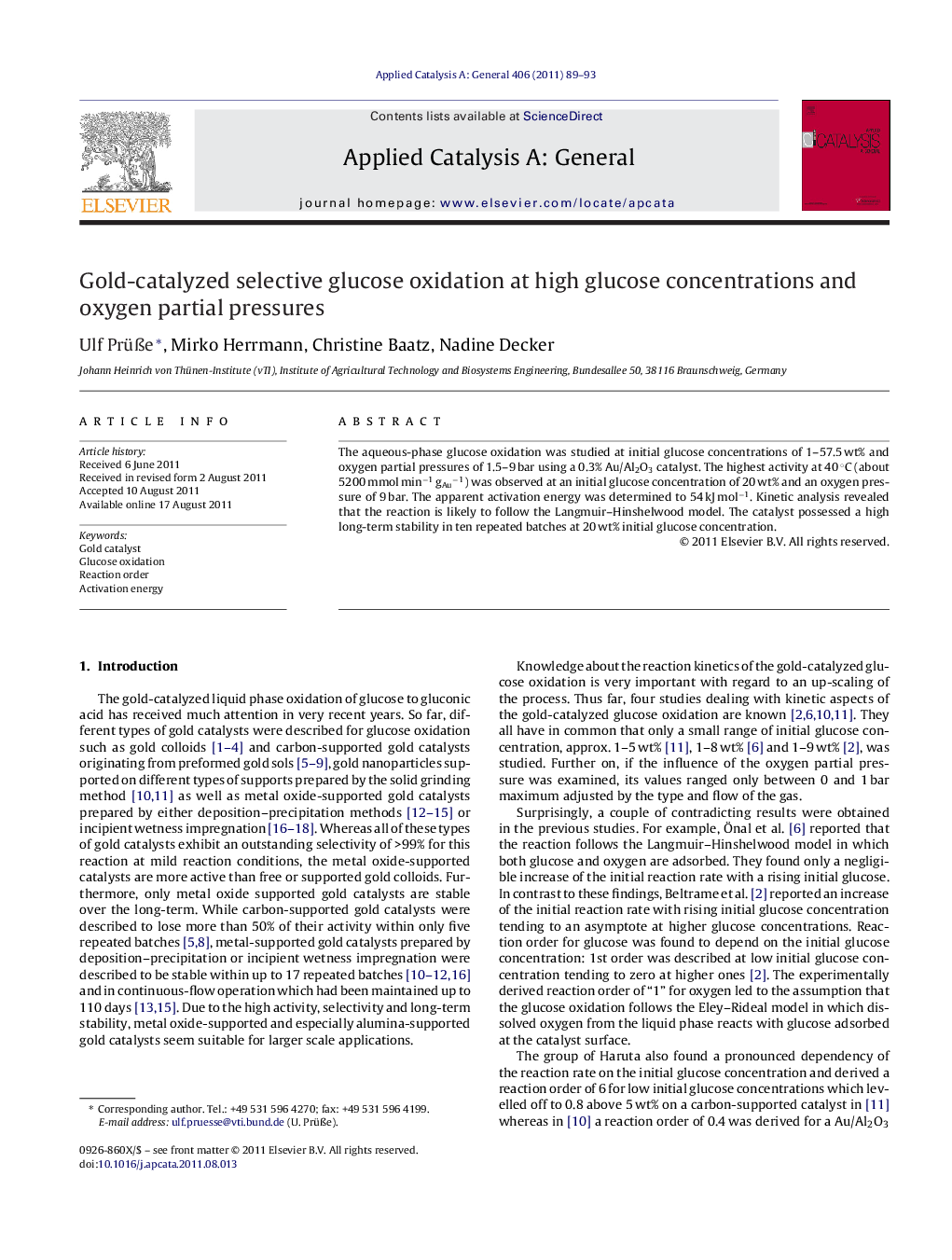| Article ID | Journal | Published Year | Pages | File Type |
|---|---|---|---|---|
| 41226 | Applied Catalysis A: General | 2011 | 5 Pages |
The aqueous-phase glucose oxidation was studied at initial glucose concentrations of 1–57.5 wt% and oxygen partial pressures of 1.5–9 bar using a 0.3% Au/Al2O3 catalyst. The highest activity at 40 °C (about 5200 mmol min−1 gAu−1) was observed at an initial glucose concentration of 20 wt% and an oxygen pressure of 9 bar. The apparent activation energy was determined to 54 kJ mol−1. Kinetic analysis revealed that the reaction is likely to follow the Langmuir–Hinshelwood model. The catalyst possessed a high long-term stability in ten repeated batches at 20 wt% initial glucose concentration.
Graphical abstract.Figure optionsDownload full-size imageDownload high-quality image (168 K)Download as PowerPoint slideHighlights► Gold-catalyzed glucose oxidation at 1–57.5 wt% glucose and 1.5–9 bar oxygen. ► Apparent activation energy was determined to 54 KJ mol−1. ► Reaction is likely to follow the Langmuir–Hinshelwood model. ► High long-term stability in ten repeated batches at 20 wt% glucose and 9 bar oxygen.
